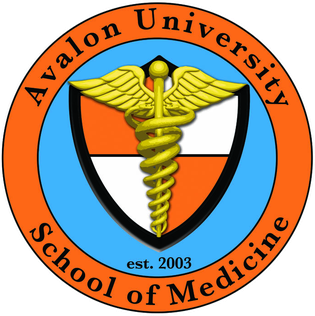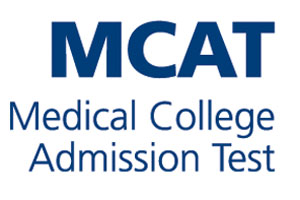Related Research Articles
The United States Medical Licensing Examination (USMLE) is a three-step examination program for medical licensure in the United States sponsored by the Federation of State Medical Boards (FSMB) and the National Board of Medical Examiners (NBME). Physicians with a Doctor of Medicine (MD) degree are required to pass the USMLE for medical licensure. However, those with a Doctor of Osteopathic Medicine degree (DO) are required to take the COMLEX-USA (COMLEX) exams.
According to the US Department of Education, the Educational Commission for Foreign Medical Graduates is "the authorized credential evaluation and guidance agency for non-U.S. physicians and graduates of non-U.S. medical schools who seek to practice in the United States or apply for a U.S. medical residency program. It provides comprehensive information and resources on licensure, the U.S. Medical Licensure Examination (USMLE), residencies, and recognition."
Step 2 Clinical Skills of the United States Medical Licensing Examination (USMLE) was an exam administered to medical students/graduates who wish to become licensed physicians in the U.S. It is similar to the COMLEX-USA Level 2-PE exam, taken by osteopathic medical students/graduates who seek licensure as physicians in the U.S. For US medical students, the exam fee is $1,300. For medical students at non-US medical schools, the tests cost is higher—currently $1,535. These fees do not include costs associated with travel and lodging to take the test. Historically, US students have taken Step 2 CS late in their senior year, prior to graduation. However, now that more residency programs require students to record a passing score, many US medical schools recommend students take Step 2 CS in the fall of their senior year.
The United States Medical Licensing Examination (USMLE) Step 1 is a standardized test that assesses a medical student's knowledge of basic science concepts and their application to clinical medicine. The exam is one of three components required for medical licensure in the United States and is typically taken by students after their second year of medical school.
The USMLE-Step 2-CK is the nine-hour-long multiple-choice portion of the second part of the United States Medical Licensure Examination. It assesses clinical knowledge through a traditional, multiple-choice examination. In contrast to the USMLE Step 1, the focus is much more on clinical application of medical knowledge. It assesses the ability to apply medical knowledge, skills, and understanding of clinical science essential for the provision of patient care under supervision. The USMLE Step 2 is generally taken during the 4th year of medical school by U.S. medical students.
The Comprehensive Osteopathic Medical Licensing Examination of the United States (COMLEX-USA) is a series of three osteopathic medical licensing examinations administered by the National Board of Osteopathic Medical Examiners (NBOME) similar to the United States Medical Licensing Examination (USMLE). COMLEX-USA is the most common pathway by which osteopathic physicians (D.Os) apply for medical licensure, and is accepted in all 50 states. The 3-digit standard scores of COMLEX-USA Level 1, Level 2- Cognitive Evaluation (CE), and Level 3 have a range of 9-999 and a mean of 500. Most candidates score between 250 and 800. 400 is the minimum passing score for COMLEX-USA Levels 1 and 2; 350 for COMLEX-USA Level 3. It was announced on January 24, 2022 that the COMLEX-USA Level 1 examination will be moving from a 3-digit numeric score to solely pass/fail beginning on May 10, 2022.

Medical University of the Americas (MUA) is a private for-profit offshore medical school in Charlestown, Nevis. It is owned by R3 Education, Inc. which also owns St. Matthew's University and Saba University School of Medicine MUA confers upon its graduates the Doctor of Medicine (MD) degree.
An international medical graduate (IMG), earlier known as a foreign medical graduate (FMG), is a physician who has graduated from a medical school outside of the country where he or she intends to practice. The term non-local medical graduate may be similarly used in countries with distinct licensing regions within them. Generally, the medical school of graduation is one listed in the World Directory of Medical Schools (WDOM) as accredited by the Foundation for Advancement of International Medical Education and Research or the World Health Organization.

Ross University School of Medicine (RUSM) is a private for-profit medical school. Its main campus is located in Barbados, and administrative offices are located in Miramar, Florida, in the United States. Prior to 2019, the university's main campus was in Portsmouth, Dominica but moved to its present location in Barbados in January 2019. RUSM is owned by Adtalem Global Education Inc.
Doctor of Osteopathic Medicine is a medical degree conferred by the 38 osteopathic medical schools in the United States. DO and Doctor of Medicine (MD) degrees are equivalent: a DO graduate may become licensed as a physician or surgeon and thus have full medical and surgical practicing rights in all 50 US states. As of 2021, there were 168,701 osteopathic physicians and medical students in DO programs across the United States. Osteopathic medicine emerged historically from osteopathy, but has become a distinct profession.
The American University of Integrative Sciences (AUIS), is a private for-profit offshore medical school with a single campus located in Barbados. Founded in 1999, it was formerly known as the University of Sint Eustatius School of Medicine (USESOM). For a period, the school was based in Sint Maarten, where it was taken over by IEMR LLC, a US-based company. Since October 2017, AUIS has operated in Barbados, and it is currently a candidate for accreditation by the Caribbean Accreditation Authority for Education in Medicine and other Health Professions (CAAM-HP).
Step 3 is the final exam in the USMLE series of examinations. It is part of the licensing requirements for Doctors of Medicine (M.D.), including international medical graduates aiming to practice medicine in the United States. Generally, it is a pre-requisite of the majority of the state licensing boards.
Saint James School of Medicine (SJSM) is a private for-profit offshore medical school with two basic science campuses, one in British Overseas Territory of Anguilla, and the other in Saint Vincent and the Grenadines, it is considered one school with two campuses. Saint James confers upon its graduates the Doctor of Medicine (M.D.) degree.
The Federation of State Medical Boards (FSMB) of the United States is a national non-profit organization that represents the 71 state medical and osteopathic boards of the United States and its territories and co-sponsors the United States Medical Licensing Examination. Medical boards license physicians, investigate complaints, discipline those who violate the law, conduct physician evaluations, and facilitate the rehabilitation of physicians where appropriate. The FSMB's mission calls for "continual improvement in the quality, safety and integrity of health care through the development and promotion of high standards for physician licensure and practice."

Aureus University School of Medicine is a private university located in Oranjestad, Aruba. Aureus confers upon its graduates the Doctor of Medicine (MD) degree.

Humayun Javaid Chaudhry, D.O., MACP, FRCP (Lon.), FRCP (Edin.) is an American physician and medical educator who is president and chief executive officer of the Federation of State Medical Boards (FSMB) of the United States, a national non-profit organization founded in 1912 that represents the 70 state medical boards of the United States and its territories and which co-sponsors the United States Medical Licensing Examination (USMLE). From 2007 to 2009, he served as Commissioner of Health Services for Suffolk County, New York, the state's most populous county outside New York City. In 2016, he was listed by Modern Healthcare magazine as one of the 50 Most Influential Physician Executives and Leaders.
The National Board of Medical Examiners (NBME), founded in 1915, is a United States non-profit which develops and manages assessments of health care professionals. Known for its role in developing the United States Medical Licensing Examination (USMLE) in partnership with the Federation of State Medical Boards (FSMB), USMLE examinations for medical students and residents are used by medical licensing authorities in the U.S. to help determine qualifications to grant and recognize medical licenses. NBME also creates assessments and materials that are used by medical students, medical educators, practicing physicians, and for state testing of physicians already holding licenses.

Avalon University School of Medicine (AUSOM) is a private medical school located in Willemstad, Curaçao, in the Caribbean. AUSOM confers upon its graduates the Doctor of Medicine (MD) degree. Administrative offices for the university are located in Youngstown, Ohio.

The Medical College Admission Test is a computer-based standardized examination for prospective medical students in the United States, Australia, Canada, and the Caribbean Islands. It is designed to assess problem solving, critical thinking, written analysis and knowledge of scientific concepts and principles. Before 2007, the exam was a paper-and-pencil test; since 2007, all administrations of the exam have been computer-based.
St. George's University School of Medicine is the medical school of St. George's University located in St. George's, Grenada. The school was founded by Charles R. Modica on July 23, 1976. Because of its size, the school placed more doctors into first-year US residency positions than any other medical school in the world between 2011 and 2012. It was rated by The Princeton Review as one of the "Best 168 Medical Schools" in 2012. There are 158 accredited MD-granting institutions in the United States.
References
- 1 2 "United States Medical Licensing Examination | Announcements". Archived from the original on 2013-12-19. Retrieved 2014-03-08.
- ↑ "2009 - Step 1 - Content Description and General Information" (PDF). Archived from the original (PDF) on 2008-10-10. Retrieved 2008-10-09.
- 1 2 "Unknown" (PDF).[ permanent dead link ]